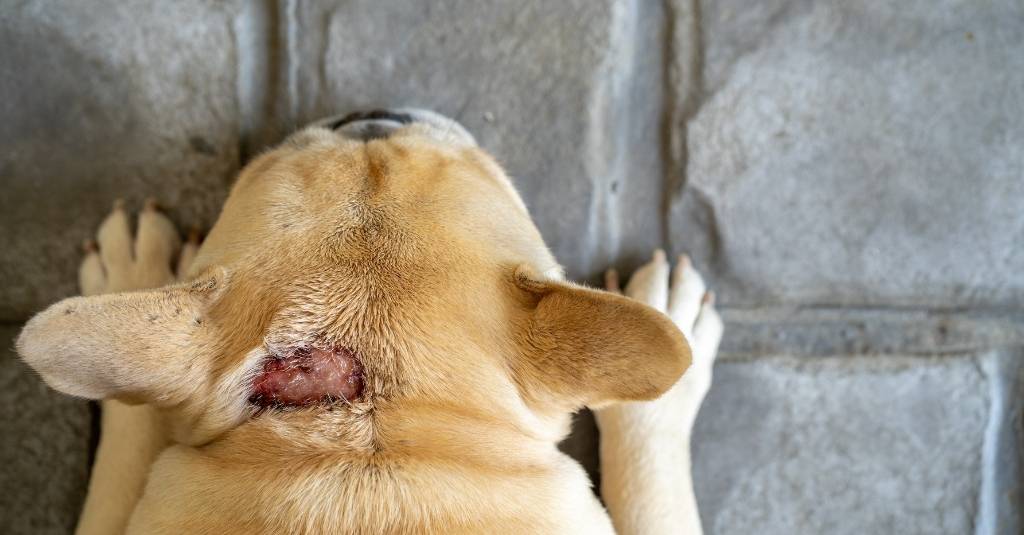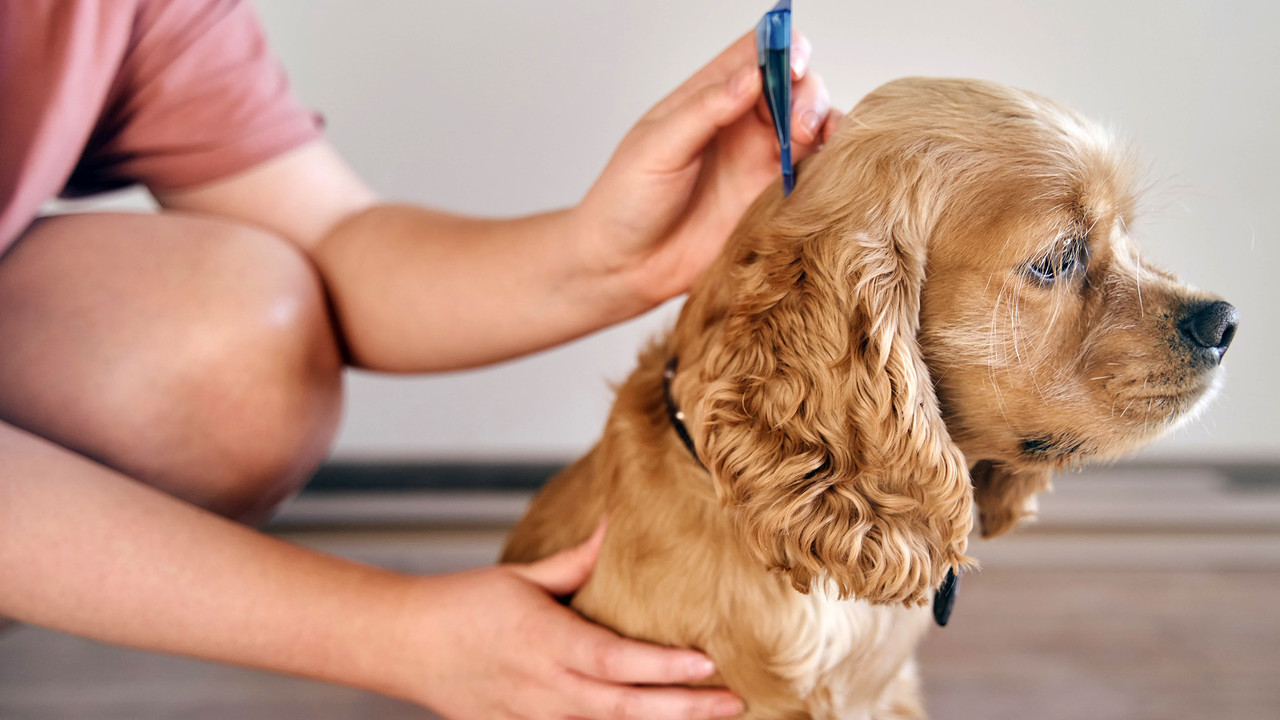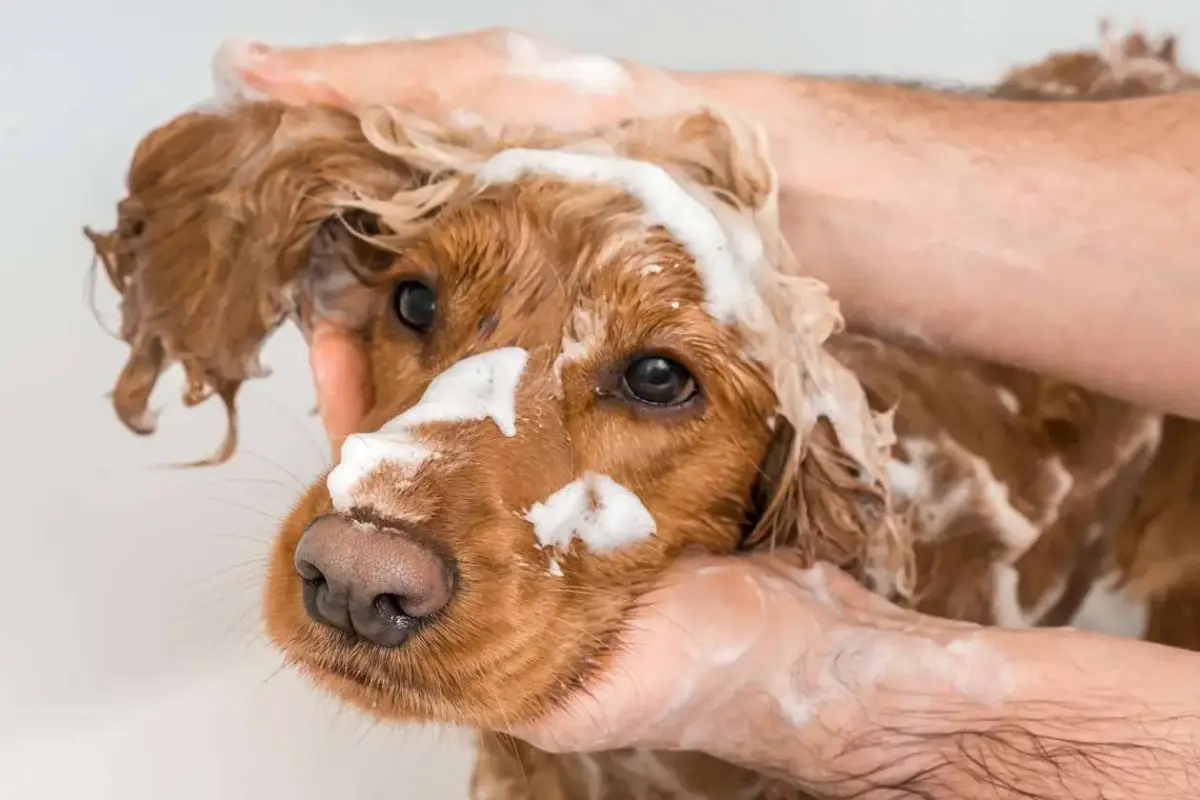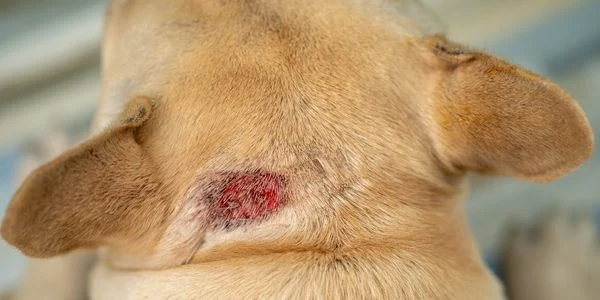Are you unsure whether your cherished dog is experiencing more than simply an itch? Hot spots, also known as acute moist dermatitis, are irritable skin lesions that cause discomfort for your dog. They can leave your canine buddy feeling uncomfortable and, quite honestly, miserable.
But fear not we've got you covered for everything from causes to symptoms to at-home treatments to knowing when to visit the vet. Set aside your concerns and continue reading to learn everything you need to know to help your pet navigate hot places like a pro!
Identifying Hot Spots
Identifying the symptoms and signs of hot spots is the first step towards providing relief for your pet. Common symptoms include warmth in the area, redness, swelling, itching that is frequently severe, and hair loss surrounding the area. Your dog may have a hot spot if they appear uncomfortable, become fixated on a particular location on their body, or lick or nip at it frequently.
While it's good to have knowledge about your pet's various ailments and DIY treatment alternatives, nothing matches a professional diagnosis. Speaking with a veterinarian about your dog's symptoms helps to guarantee that the problem is indeed a hot spot and that a bacterial infection won't result from it. Recall: An accurate diagnosis means a successful course of treatment!

Common Causes
- Before we dig into the DIY cures for these irritating hot spots, we first understand what causes them. Knowing the origin might help you target treatment options efficiently and prevent future instances.
Hypersensitivity
- Like people, dogs are susceptible to allergies. Food allergies, environmental irritants, and even reactions to insect bites and stings can be among them. Your dog may begin to scratch and itchy during an allergic reaction, which could result in hot spots.
Overindulgent Scratching or Licking
- Your dog may lick or scratch a certain area of their body frequently out of boredom or tension. This ongoing injury that you cause to the surface of your skin has the potential to develop into a serious hot spot.
Inadequate Personal Care Routines
- Dogs with lengthy, dense fur can get tangles and mats that press moisture against their skin. This humid, heated atmosphere serves as the ideal habitat for bacteria, which could lead to hot patches.
Ear Infections
- Your dog may react to an ear infection by constantly rubbing or scratching the region around their ear. Ear infections are extremely painful. As a result, there can develop a hot patch next to or behind the ear flap.
Underlying Health Issues
- Certain medical conditions, including as hypothyroidism or arthritis, can cause discomfort, which may prompt your dog to lick or chew excessively on their skin, resulting in hot spots.
Knowing these reasons will help you treat and avoid reoccurring hot spots in dogs more effectively!
Hot Spot Home Remedy For Dogs
Let's start with some do-it-yourself home cures now! When it comes to promptly managing little hot spots, homemade therapies can be an excellent substitute. They can relieve your pet's discomfort without making you run out to the vet in the middle of the night. As we present our best DIY hot spot cures, start the drumroll!

Black Tea Bags
-
First up on our list of DIY cures for hot spots are plain old black tea bags. However, why black tea? Tannic acids found in black tea are the solution; they are excellent at removing some of that annoying itching and drying up hot spots. They're among our best picks for relieving Fido's discomfort because they're so good at fostering healing and lowering inflammation.
-
To apply this DIY treatment on your dog, just steep a black tea bag in hot water, just like you would for yourself. Let it cool (we don't want any dogs burned! ), and then dab the tea bag lightly on the afflicted area.
-
While providing your furball with much-needed cuddles and words of encouragement, do this for around five minutes. You ought to start seeing results rather quickly if you repeat the procedure several times every day!
Hazel Witch
-
Next up is witch hazel, which is a common component of skincare products. Known for its calming and anti-inflammatory qualities, it's no surprise that it made our list (pun intended!). Witch hazel is an amazing cure since it can assist to lessen the inflammation and itching that are related to hot spots!
-
Applying witch hazel to your dog's hot places needs to be done carefully. Just dab a fresh cotton ball or towel in witch hazel and dab it straight onto the heated area. Note: Because this can sting, you should avoid having any open wounds!
-
Until the hot place starts to heal, repeat this procedure two or three times a day. Ensure that your fur buddy cannot instantly lick the area, as consumption could lead to tummy trouble. That's definitely not our goal!
Apple Cider Vinegar
-
Here's a treatment that has some kick: apple cider vinegar! Acetic acid content makes apple cider vinegar, or ACV as it's frequently shortened, an excellent antibacterial and anti-inflammatory. It can offer quick relief for your dog, aiding in relaxing those awful hot spots.
-
You should dilute the apple cider vinegar before applying a layer on Fido in order to reduce the likelihood of skin irritation. For your remedy, try combining one part water and one part apple cider vinegar. After that, dip a fresh towel or cotton ball into this concoction and apply it gently to the heated area. This can be applied multiple times daily until the area begins to heal, but keep in mind not to apply ACV to open wounds or raw skin!
Vitamin E
-
Vitamin E is not only fantastic for human beauty routine; it also has amazing effects for dogs. With its strong antioxidant qualities, vitamin E can hasten the healing of hot spots. It's also a great hydrator, replenishing moisture in the skin to help with itching and dryness.
-
This therapy entails applying a vitamin E oil or cracking open a vitamin E tablet and putting the oil straight to your pooch's hot regions. To see an improvement, simply gently massage the oil onto the affected area three times a day.
-
Utilizing vitamin E oil has the benefit of being safe to eat and safe to leave on without rinsing off! Remember, you are not only calming troublesome hot areas but also providing your fur baby an emollient spa massage!
Read Also: How to Maintain the Breed of Welsh Terrier Dogs
Bond Gold Powder

-
We're adding Gold Bond Powder to the list of reliable hot spot treatments, so that's one more thing checked off. With components like zinc oxide and menthol, the powder helps make an unfriendly habitat for bacteria while reducing redness, soothing hot spots, and easing your dog's suffering.
-
To apply this at-home treatment on your dog, thoroughly clean and dry the affected region, and then lightly dust the hot spot with a small amount of Gold Bond powder. Make sure the powder stays out of your dog's eyes and nose and that they don't swallow it. Throughout the day, reapply as necessary, but remember to always clean the area before applying fresh powder.
Coconut Oil
-
A tropical treat for your dog is this: coconut oil! This natural remedy is an excellent therapy for hot spots because it contains a lot of lauric acid, which strengthens its antibacterial, antifungal, and anti-inflammatory qualities. Because it may directly nourish your dog's skin by penetrating the skin barrier, it also promotes recovery.
-
Applying coconut oil to heated areas is a simple 1-2-3 process! After the affected region has been cleaned, lightly rub in a little amount of coconut oil. For optimal effects, make sure you're using premium, unrefined coconut oil. Until the hot location starts to heal, repeat two or three times a day. On the plus side, your pet will smell exactly like beach days in the summer!
Honey
-
Get ready for the most delicious remedy on the list: honey! Its inherent antimicrobial qualities soothe the skin, lessen irritation, and help avoid infections. Honey's gummy, sticky feel also deters your pet from wandering around and aggravating those hotspots.
-
To completely benefit from the medicinal benefits of raw honey, you will need to use it if you want to apply this remedy. Just brush the hot place with a thin layer of raw honey and leave it there. Even though it may be tempting, make sure your dog isn't licking the spotless surface and be ready for some mess (honey is sticky!). You can use the application multiple times a day till you notice the hot spot disappearing from memory!
Oatmeal Bath
-
And lastly, if your dog is itching, an oatmeal bath can provide a great deal of help. Oatmeal is calming and hydrating, and its anti-inflammatory qualities can help with hot spot redness and irritation.
-
To give rolled oats this spa-like treatment, just use a food processor or blender to crush them into a fine powder. Give your dog a warm, not hot, bath and add the oatmeal powder. Give your dog ten to fifteen minutes to soak in it. Make sure you give the affected areas plenty of time to soak!
Following their soothing bath, give your dog a thorough rinse and wipe dry. A few times a week, use this treatment until you notice the horrible hot patches begin to heal. Calm and healing: what's not to love?
When To Consult A Veterinarian
Although moderate hot spots can be effectively treated with homemade medicines, occasionally your pet may require additional assistance. It's time to bring in the experts if you see that the hot spot is growing bigger, appears more inflamed, or the symptoms continue even after using over-the-counter remedies.
If hot spots are not being treated at home or are not improving, there is a greater chance of problems. Your beloved pet may experience further agony or pain if these unpleasant skin diseases worsen and turn into deep skin infections. Don't take a chance; always contact your veterinarian if you have any questions or concerns!
Preventing Hot Spots
-
The first line of defense against hot spots is to be proactive. You may spare yourself stress and your dog pain by learning how to avoid these annoying skin irritations in the first place!
-
Preventing hot spots is largely achieved by good grooming and hygiene habits. Regularly brushing your dog will help avoid matting, especially in longer-haired dogs, and bathing them with shampoo that is suitable for dogs can keep their skin clean and clear of any potential irritants.
-
Additionally, adequate nutrition and hydration play a big role in keeping good skin for your pooch. Make sure your dog eats a well-balanced diet full of vital nutrients, such as Omega-3 fatty acids, which promote healthy skin. Maintaining adequate hydration for them is similarly crucial.
-
In the event that your dog has known allergies, developing hot patches can be avoided by properly controlling these allergies. Your veterinarian could advise against particular triggers, drugs, or even special diets.
-
When licking and scratching due to stress or boredom occurs, it may be necessary for dogs with hot spot issues to make lifestyle adjustments. This could be giving your pet extra exercise, giving them stimulating toys, or creating a peaceful environment.
Keep in mind that every minute you spend today avoiding hot spots could save you hours later on treatment!







